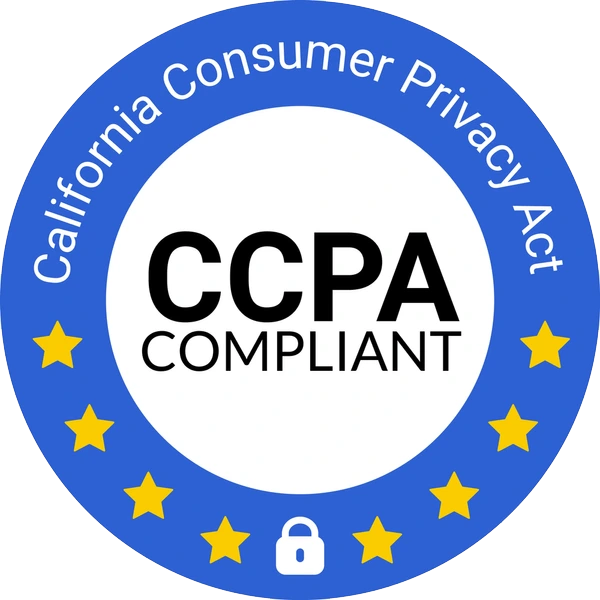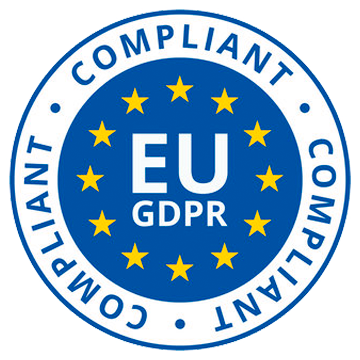In today’s digital world, secure document sharing has become an essential aspect of every organization’s operations. Whether it’s sharing sensitive financial reports, confidential legal documents, or even just collaborating on project files, ensuring the security and integrity of your documents is paramount. In this ultimate guide, we will delve into the importance of secure document sharing, explore the risks associated with insecure practices, highlight the benefits of implementing secure solutions, discuss key features to look for in document sharing tools, offer tips on choosing the right solution for your business, provide best practices for implementing and maintaining a secure document sharing system, and ensure compliance with data protection regulations.
Share smarter links
With Sizle, every link is trackable. See who opens it, how long they stay and capture leads instantly.
Trusted by 30,000+ users. No credit card needed.
Understanding the Importance of Secure Document Sharing
Effective and secure document sharing plays a crucial role in the success of any organization. By securely sharing documents, you not only protect sensitive information but also foster collaboration among team members, partners, and clients. Secure document sharing minimizes the risk of data breaches, unauthorized access, and leakage of confidential information. It also ensures document integrity, authenticity, and confidentiality, instilling trust and confidence in your stakeholders.
When it comes to secure document sharing, there are various methods and technologies available to ensure the highest level of protection. Encryption is one such method that converts the content of a document into an unreadable format, making it virtually impossible for unauthorized individuals to decipher the information. Additionally, secure file transfer protocols, such as SFTP (Secure File Transfer Protocol) or HTTPS (Hypertext Transfer Protocol Secure), provide a secure channel for transmitting documents over the internet.
The Risks of Insecure Document Sharing
Insecure document sharing practices can have severe consequences for your organization. The risk of data breaches, unauthorized access, and leakage of confidential information increases significantly when documents are shared without proper security measures. This can result in financial loss, reputational damage, legal implications, and loss of customer trust. Additionally, non-compliance with data protection regulations can lead to hefty fines and penalties.
One common risk of insecure document sharing is the interception of documents during transmission. Without proper encryption or secure file transfer protocols, hackers or malicious individuals can intercept the documents and gain access to sensitive information. This can lead to identity theft, corporate espionage, or even the compromise of national security in certain cases.
Another risk is the accidental sharing of confidential documents with unintended recipients. This can occur due to human error, such as selecting the wrong email address or failing to properly secure document sharing settings. In such cases, sensitive information may end up in the wrong hands, potentially causing irreparable damage to your organization.
The Benefits of Secure Document Sharing
Implementing secure document sharing practices brings numerous benefits to your organization. Firstly, it ensures the privacy and confidentiality of sensitive information, protecting your business and customers from potential harm. By encrypting documents and using secure file transfer protocols, you create a secure environment where data breaches and unauthorized access are significantly reduced.
Secondly, secure document sharing simplifies collaboration and streamlines workflows by providing a secure platform for document exchange. With the ability to securely share documents, team members can collaborate in real-time, making edits, providing feedback, and working together seamlessly. This eliminates the need for multiple versions of the same document and reduces the chances of conflicting edits or miscommunication.
Furthermore, secure document sharing enables version control, allowing multiple parties to work on the same document simultaneously without the risk of conflicting edits. This promotes efficient collaboration and ensures that everyone is working with the most up-to-date version of the document. Version control also provides a history of changes, making it easier to track and review document modifications.
Additionally, with audit trails and activity monitoring, you can track document access and modifications, enhancing accountability and ensuring compliance. This level of transparency allows you to monitor who has accessed a document, what changes were made, and when they occurred. In regulated industries or organizations that handle sensitive information, this feature is essential for demonstrating compliance with data protection regulations.
In conclusion, secure document sharing is vital for protecting sensitive information, fostering collaboration, and ensuring compliance. By implementing proper security measures, such as encryption and secure file transfer protocols, organizations can minimize the risks associated with document sharing and reap the benefits of streamlined workflows, enhanced accountability, and increased stakeholder trust.
Key Features of Secure Document Sharing Tools
When selecting a document sharing solution, it’s essential to consider key features that enhance security and facilitate efficient collaboration.
Document sharing tools have become an integral part of modern business operations. They provide a secure and convenient way to share sensitive documents with colleagues, clients, and partners. However, not all document sharing tools are created equal. To ensure the safety and confidentiality of your documents, it’s crucial to choose a solution that offers robust security features. Let’s explore some key features to look for when selecting a document sharing tool.
Encryption and Security Protocols
One of the most critical features to consider is encryption. Look for solutions that offer robust encryption algorithms to protect your documents during transit and storage. Encryption ensures that the contents of your documents remain protected even if they fall into the wrong hands. Advanced encryption standards, such as AES-256, provide a high level of security and are widely recognized as industry best practices.
In addition to encryption, consider solutions that support secure transmission protocols such as SSL/TLS. These protocols provide a secure connection between the user and the document sharing platform, preventing unauthorized access and data interception. By utilizing encryption and secure protocols, document sharing tools can ensure the confidentiality and integrity of your documents.
User Authentication and Access Control
Another crucial aspect of secure document sharing tools is user authentication and access control. A reliable document sharing tool should offer robust user authentication mechanisms to ensure only authorized users can access sensitive documents. Two-factor authentication (2FA) is an effective method that adds an extra layer of security by requiring users to provide two forms of identification, such as a password and a unique code sent to their mobile device.
Additionally, single sign-on (SSO) integration can streamline the authentication process by allowing users to log in to the document sharing platform using their existing credentials from other trusted systems. This not only enhances security but also improves user experience and reduces the risk of password-related security breaches.
Access control features are equally important in ensuring document security. They enable you to define user permissions and access levels, ensuring that documents are shared with the appropriate parties while maintaining confidentiality. Granular access controls allow you to restrict access to specific documents, folders, or even individual sections within a document. This ensures that only authorized individuals can view, edit, or download sensitive information.
Audit Trails and Activity Monitoring
Choose a solution that provides comprehensive audit trails and activity monitoring features. These features allow you to track document access, modifications, and downloads, providing a clear record of who accessed the document and when. Audit trails enhance accountability, deter unauthorized access, and assist in investigating any security incidents.
Activity monitoring goes hand in hand with audit trails. It provides real-time visibility into user actions, allowing administrators to detect and respond to any suspicious activities promptly. For example, if an unauthorized user attempts to access a document or if a user downloads an unusually large number of files within a short period, the activity monitoring feature can trigger alerts and notify the appropriate personnel.
Furthermore, activity monitoring can also help identify patterns and trends in document usage, enabling organizations to optimize their document sharing processes and identify potential areas for improvement.
By considering these key features, you can select a document sharing tool that not only enhances security but also facilitates efficient collaboration. Remember, the security of your documents is paramount, and investing in a reliable and secure document sharing solution is a crucial step in safeguarding your sensitive information.
Choosing the Right Secure Document Sharing Solution
When it comes to selecting a document sharing solution, it’s crucial to evaluate your organization’s specific needs and requirements.
Document sharing has become an essential aspect of modern business operations. Whether you need to collaborate with team members on a project, share important files with clients, or securely store sensitive documents, finding the right document sharing solution is vital. With numerous options available in the market, it can be overwhelming to make a decision. However, by carefully evaluating your needs and comparing different tools, you can find a solution that meets all your requirements.
Evaluating Your Document Sharing Needs
Start by assessing the types of documents you frequently share and collaborate on. Consider factors such as document size, file formats, and the number of users who need access. Are you dealing with large multimedia files or primarily working with text-based documents? Understanding the nature of your documents will help you determine the features and capabilities you require in a document sharing solution.
Furthermore, consider whether your team requires real-time collaboration or just the ability to share completed documents. Real-time collaboration allows multiple users to work on a document simultaneously, making it ideal for teams that need to collaborate on projects or edit documents together. On the other hand, if your team primarily works on individual tasks and only needs to share finalized documents, a solution with robust version control and file sharing capabilities may be more suitable.
These considerations will help you narrow down your options and choose a solution that best aligns with your business needs.
Comparing Different Document Sharing Tools
Research and compare different document sharing tools in the market, considering factors such as security features, ease of use, integration capabilities, scalability, and affordability. Look for user reviews and customer testimonials to gain insights into their experiences. Understanding the experiences of other users can provide valuable information about the strengths and weaknesses of each tool.
Security should be a top priority when selecting a document sharing solution. Ensure that the tool you choose offers robust encryption, access controls, and data protection measures. Look for certifications and compliance with industry standards to ensure that your sensitive information remains secure.
Additionally, consider the ease of use and user interface of the document sharing tool. A user-friendly interface can significantly impact productivity and user adoption. Look for tools that offer intuitive navigation, simple file management, and clear collaboration features.
Integration capabilities are also crucial, especially if your organization uses other software applications. Ensure that the document sharing solution integrates seamlessly with your existing tools, such as project management software, customer relationship management systems, or email platforms. This integration will streamline your workflow and enhance productivity.
Scalability is another important factor to consider. As your organization grows, your document sharing needs may evolve. Choose a solution that can accommodate your future requirements without significant disruptions or additional costs.
Finally, affordability is a key consideration for any business. Evaluate the pricing plans and subscription models offered by different document sharing tools. Consider the value you will receive in terms of features, security, and support. Remember that the cheapest option may not always be the most suitable, so weigh the cost against the benefits.
Seek recommendations from trusted sources within your industry to ensure you make an informed decision. Consult with colleagues, attend industry events, or join online forums to gather insights from professionals who have experience with different document sharing solutions.
By thoroughly evaluating your document sharing needs and comparing different tools, you can make an informed decision and choose the right secure document sharing solution for your organization.
Implementing Secure Document Sharing Practices
Implementing secure document sharing practices requires a well-defined strategy and a commitment to continuous improvement.
Establishing User Permissions and Access Levels
Define user permissions and access levels based on the principle of least privilege. Only grant access to individuals who genuinely need it and ensure that access is revoked when no longer required. Regularly review and update user privileges to prevent unauthorized access and minimize the risk of data breaches.
Regularly Updating and Patching Your Tools
Ensure that your document sharing tools are always up to date with the latest security patches and updates. Regularly check for software updates and implement them promptly to address any security vulnerabilities. Stay informed about security best practices and emerging threats to proactively protect your documents.
Training Employees on Secure Document Sharing
Train your employees on secure document sharing practices, emphasizing the importance of confidentiality, user authentication, and proper access control. Provide regular security awareness training sessions and encourage employees to report any suspicious activities or incidents. Foster a culture of security consciousness within your organization.
Maintaining Your Secure Document Sharing System
Maintaining a secure document sharing system requires ongoing monitoring and evaluation.
Regular Security Audits and Assessments
Conduct regular security audits and assessments to identify vulnerabilities and gaps in your document sharing system. Engage external security professionals to perform penetration testing and vulnerability assessments periodically. Use the findings to improve and enhance your security measures, ensuring the integrity of your documents.
Dealing with Potential Security Breaches
Despite all preventive measures, security breaches can still occur. Establish an incident response plan to quickly and effectively respond to security incidents. Designate a team responsible for handling breaches, including investigation, containment, and recovery. Promptly communicate any breaches to affected parties and take appropriate steps to mitigate any potential damage.
Ensuring Compliance with Data Protection Regulations
Compliance with data protection regulations is a critical aspect of secure document sharing. Stay updated with relevant regulations, such as the General Data Protection Regulation (GDPR) or the California Consumer Privacy Act (CCPA), and ensure your document sharing practices align with their requirements. Regularly review and update your privacy policies, terms of service, and data retention policies to maintain compliance.
By following the guidelines and best practices outlined in this ultimate guide, you can empower your organization with secure document sharing capabilities. Implementing and maintaining a secure document sharing system not only protects your sensitive information but also enhances collaboration and streamlines workflows, leading to increased productivity and improved business outcomes.
Turn docs into deal intelligence
Sizle shows what really happens after you hit send.
Free 7-day trial
Unlock insights instantly
Join 30,000+ professionals




